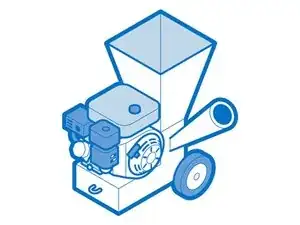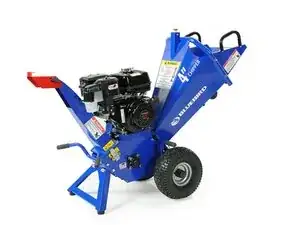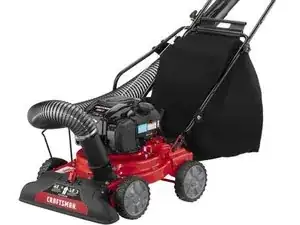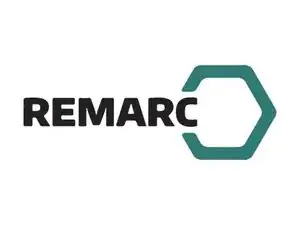General
Woodchippers and garden shredders are essential tools for gardeners and landscapers, designed to break down organic matter like branches, leaves, and other garden debris into smaller pieces. These machines not only help reduce waste but also create valuable mulch and compost material.
Types of Woodchippers and Garden Shredders
Woodchippers and garden shredders come in various designs, each suited to different types of garden debris and wood sizes. Below are the most common types:
Disk Chippers
Disk chippers use a rotating disk with sharp blades to cut wood into smaller pieces. As branches are fed into the chipper, the spinning disk slices them against a stationary blade or "anvil." This type of chipper is typically used for processing large branches and trees, creating evenly sized wood chips.
Drum Chippers
Drum chippers feature a large rotating drum with multiple blades that cut wood into chips. These machines are often used in industrial settings, where high volume and consistent chip size are required. They are capable of handling larger branches and can be used for commercial landscaping or forestry operations.
Roller Shredders
Roller shredders use a rotating roller with teeth to crush and break down wood and garden waste. This design is slower than disk or drum chippers but is generally quieter and can handle a wider variety of materials, including branches, leaves, and small twigs.
Hammermill Shredders
Hammermill shredders contain a rotating drum with swinging hammers that pulverize material into fine pieces. These shredders are versatile and can handle a range of garden waste, including branches, leaves, and compostable materials. The output is often more uniform, making it ideal for creating compost or mulch.
Flail Chippers
Flail chippers use chains or swinging blades to break down materials. They are more resistant to damage from foreign objects like nails or stones and are ideal for processing mixed garden debris, but may produce less uniform output.
Components of Woodchippers and Garden Shredders
Understanding the key components of woodchippers and garden shredders helps in maintenance and repair. Here are the most basic parts:
Infeed Chute or Hopper
This is where garden debris or wood is fed into the chipper or shredder. The design of the chute or hopper determines the safety level and the size of the materials that can be processed.
Cutting System
The cutting system is the heart of the machine, consisting of blades, drums, rollers, or hammers. This is where the material is chopped, crushed, or ground into smaller pieces.
Discharge System
After processing, the chipped or shredded material is discharged through an outlet chute or pipe. Some machines have adjustable chutes to direct the output where it's needed, such as into a collection bag or onto the ground.
Power Source
Woodchippers and garden shredders can be powered by gasoline engines, electric motors, or tractor-driven power take-offs (PTOs). Gasoline engines are more powerful and suitable for heavy-duty use, while electric models are quieter and more environmentally friendly. PTO-powered chippers are designed for use with tractors or other machinery.
Common Uses
Woodchippers and garden shredders are used for a variety of purposes, including:
- Garden Cleanup: Shredding leaves, branches, and other garden debris to reduce waste and create mulch or compost.
- Landscaping: Producing wood chips for pathways, flower beds, or other landscaping projects.
- Forestry and Arboriculture: Processing tree branches and other wood waste generated during tree trimming or removal.
- Agriculture: Creating mulch for soil improvement or animal bedding.
Safety Precautions
Woodchippers and garden shredders can be dangerous if not used properly. To ensure safety, follow these precautions:
- Wear Protective Gear: Always wear safety goggles, gloves, hearing protection, and sturdy clothing when operating the machine.
- Keep Hands and Clothing Clear: Avoid reaching into the infeed chute or hopper. Use a push stick or similar tool to guide material into the machine.
- Check for Foreign Objects: Inspect branches and garden debris for nails, wires, or other metal objects that could damage the machine.
- Follow Operating Instructions: Read and understand the user manual before operating the chipper or shredder.
- Ensure Stable Setup: Place the machine on a level surface to prevent tipping during operation.
- Never Operate Alone: Have someone nearby in case of emergency.
Maintenance and Repair Tips
Regular maintenance and proper care can extend the life of woodchippers and garden shredders. Here are some key maintenance and repair tips:
- Clean Regularly: Remove debris from the machine after each use. Avoid using high-pressure water to clean, as it can damage electrical components and bearings.
- Sharpen Blades: Keep cutting blades sharp to ensure efficient operation. Follow the manufacturer's instructions for sharpening or replacing blades.
- Check Oil and Filters: For gasoline-powered models, regularly check the oil level and air filters. Change oil and filters as recommended by the manufacturer.
- Inspect Safety Features: Ensure that all safety guards and shields are in place and in good condition.
- Secure Fasteners: Check and tighten all bolts and screws to prevent loosening during operation.
- Seek Professional Help: If you're unsure about repairs or maintenance, consult a professional or the manufacturer for assistance.




